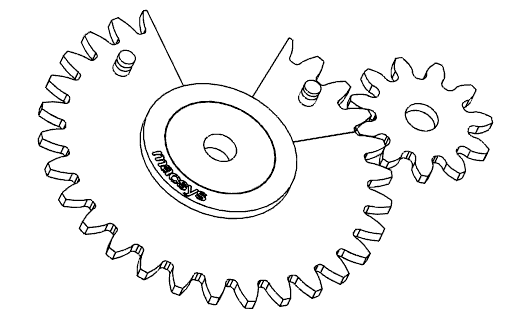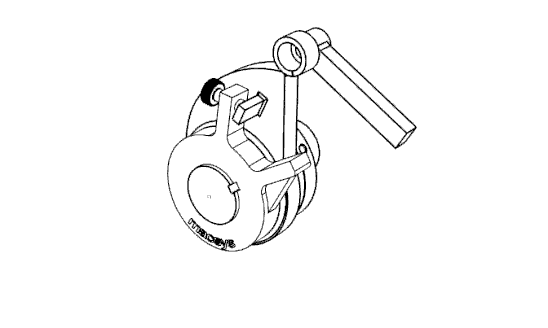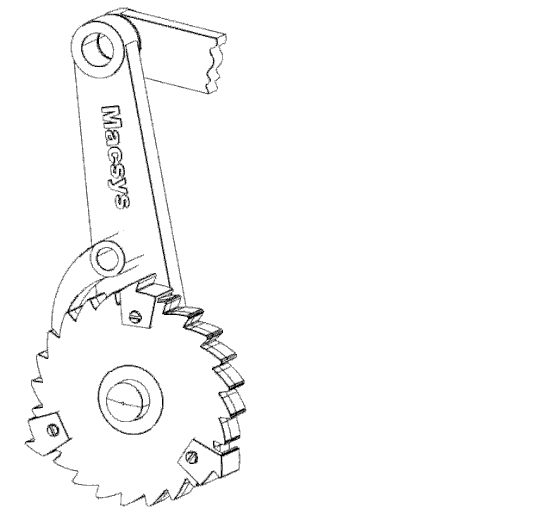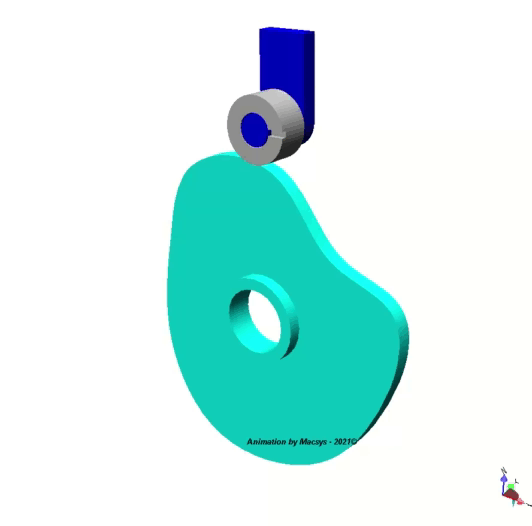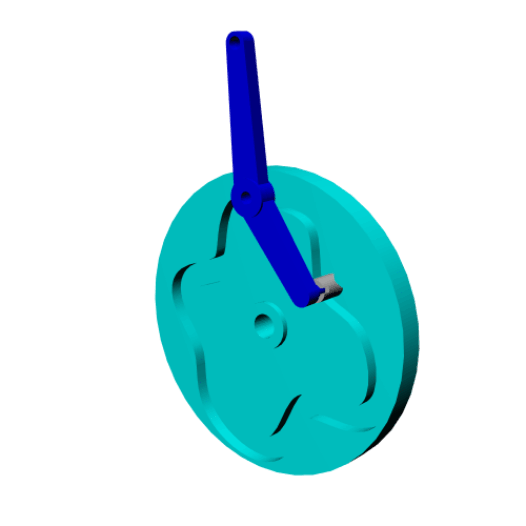Difference between revisions of "Simulations & Animations"
(→Plate Cam B) |
(→Positive motion Cam) |
||
| Line 47: | Line 47: | ||
== Positive motion Cam == | == Positive motion Cam == | ||
| − | The follower in animated cam engages a groove. Cams of this general form are known as face cams, and their distinctive feature is that the follower is given a positive motion in both directions, instead of relying upon a spring or the action of gravity to return the follower . The follower in this particular case is in the form of a bell-crank lever and is given an oscillating motion. One of the defects of the face cam is that the outer edge of of the cam groove tends to rotate the roller in one direction and the inner edge tends to rotate it in the opposite direction. A certain amount of clearance must be provided in the groove and, as the roll changes its contact from the inner edge to the outer edge, there is an instantaneous reversal of rotation which is resisted, due to the inertia of the rapidly revolving roll; the resulting friction tends to wear both the cam and roll. This wearing action, however, may not be serious when the cam rotates at low speed. | + | The follower in animated cam engages a groove. Cams of this general form are known as face cams, and their distinctive feature is that the follower is given a positive motion in both directions, instead of relying upon a spring or the action of gravity to return the follower . The follower in this particular case is in the form of a bell-crank lever and is given an oscillating motion. One of the defects of the face cam is that the outer edge of of the cam groove tends to rotate the roller in one direction and the inner edge tends to rotate it in the opposite direction. A certain amount of clearance must be provided in the groove and, as the roll changes its contact from the inner edge to the outer edge, there is an instantaneous reversal of rotation which is resisted, due to the inertia of the rapidly revolving roll; the resulting friction tends to wear both the cam and roll. This wearing action, however, may not be serious when the cam rotates at low speed [source: ISBN 978-0-8311-1029-1]. |
| + | |||
Model created in Spaceclaim and animated in SimWise 4D. | Model created in Spaceclaim and animated in SimWise 4D. | ||
[[File:Platecam-B.gif]] | [[File:Platecam-B.gif]] | ||
Revision as of 18:27, 20 August 2021
All mechanisms on this page are derived from the books Ingenious Mechanisms for Designers and Inventors.
Contents
Geneva Drive Wheel
Geneva Drive. Model created and animated in NX6
Intermittent Motion Gears
Model created and animated in NX6
Rotational Cam
Cam follower. Model created in SpaceClaim and animated in NX6
Scotch Yoke
Model created and animated in NX6
Variable Quick Drop
Model created and animated in NX6
Double Wheel Ratchet
Double wheel ratchet. Model created and animated in NX6
Plate Cam
The animation shown is commonly called a "plate cam" because the body of the cam is in the form of a narrow plate, the edge of which is shaped to give the required motion to the follower. This follower may be mounted in suitable guides and have a reciprocating motion (as shown in animation) or it may be in the form of an arm or lever which oscillates as the cam revolves. When the follower is in a vertical position as shown, it may be held in contact with the cam either by the action of gravity alone or a spring may be used to increase the contact pressure, especially if there are rather abrupt changes in the profile of the cam and speed is comparatively fast [source: ISBN 978-0-8311-1029-1].
Model created in Spaceclaim and animated in SimWise 4D.
Positive motion Cam
The follower in animated cam engages a groove. Cams of this general form are known as face cams, and their distinctive feature is that the follower is given a positive motion in both directions, instead of relying upon a spring or the action of gravity to return the follower . The follower in this particular case is in the form of a bell-crank lever and is given an oscillating motion. One of the defects of the face cam is that the outer edge of of the cam groove tends to rotate the roller in one direction and the inner edge tends to rotate it in the opposite direction. A certain amount of clearance must be provided in the groove and, as the roll changes its contact from the inner edge to the outer edge, there is an instantaneous reversal of rotation which is resisted, due to the inertia of the rapidly revolving roll; the resulting friction tends to wear both the cam and roll. This wearing action, however, may not be serious when the cam rotates at low speed [source: ISBN 978-0-8311-1029-1].
Model created in Spaceclaim and animated in SimWise 4D.

